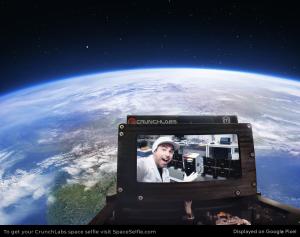FAA Ready for Spring Break Peak Travel and ‘The Great North American Eclipse’
WASHINGTON — As families across the U.S. continue their spring break travel, the Federal Aviation Administration predicts next week will be the busiest of the season, with most fliers taking off on Thursday, April 4.
The FAA is forecasting spring break traffic will peak with 50,670 flights on Thursday, April 4 and with 48,904 flights on Friday, April 5. Thursday, March 28 is also expected to see more than 50,000 flights in the sky.
While most travelers are heading to their favorite vacation destinations, a significant number of travelers are heading to various states to witness ‘The Great North American Eclipse’ on Monday, April 8. Travelers flying along the eclipse path may encounter limited parking and potential delays at airports due to the high volume of aircraft and drones attempting to witness the total solar eclipse.
Whether you are headed to the sun or headed to the solar eclipse, the FAA is working to make sure you get to your destinations safely. The FAA wants pilots to be aware of possible impacts to air traffic and airports along the eclipse path and is offering guidance to commercial planes and private aircraft ahead of their flights to witness the phenomenon.
The FAA reminds spring break travelers to be patient, give themselves extra time at the airport, and pack safely.
- Be Patient: Federal law prohibits interfering with aircraft crew or physically assaulting or threatening to physically assault aircraft crew or anyone else on an aircraft. Follow all crewmember instructions. Failing to do so can result in civil penalties, criminal fines and imprisonment. The FAA has zero tolerance for unruly behavior.
- Pay close attention to what’s in your bag. Some common toiletries that passengers pack could be hazardous. Check your bags for aerosol cans that may contain hair spray, deodorant, tanning spray or animal repellant, nail polish, artist paints and glues.
- E-cigarettes, vaping devices, and spare lithium batteries are not authorized to be packed in checked luggage. Spare lithium batteries – the kind that are found in personal electronic devices and back-up charging devices – can only travel in carry-on baggage.
- Electronic devices powered by lithium batteries can catch fire if they are damaged or have exposed electrical terminals. The FAA recommends that passengers keep cell phones and other devices nearby in the cabin to quickly access them if necessary.
For more information about unruly passengers, please visit our Unruly Passenger page on the FAA website.
For detailed information about materials that should not fly, check out our Pack Safe: When in Doubt, Leave it Out video, the FAA’s PackSafe website, and the FAA’s Hazardous Materials Safety website.
Despite a major increase in flights last year, delays and cancellations remain lower than even pre-pandemic levels.
While delays and cancellations are low, they do happen. Check the status of your flight and get important travel tips before heading to the airport on the FAA travel web page.
The FAA Air Traffic Report, which outlines potential weather impacts, is updated daily. You can also follow the FAA weather squad on X.













